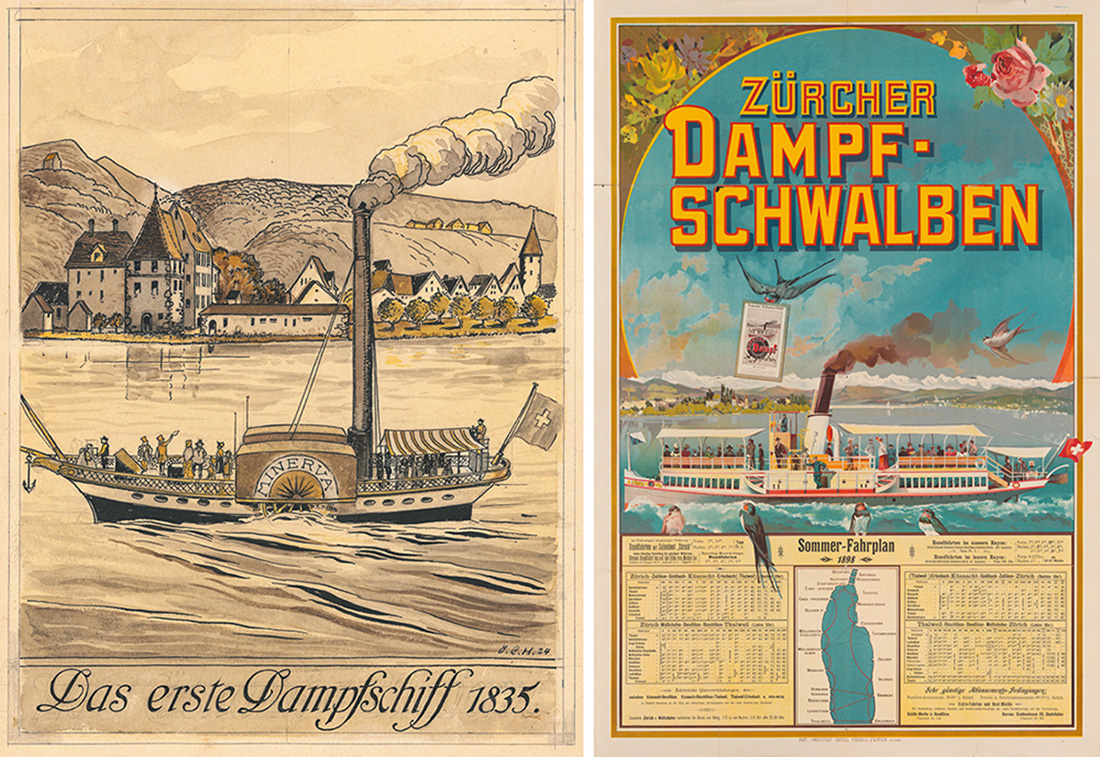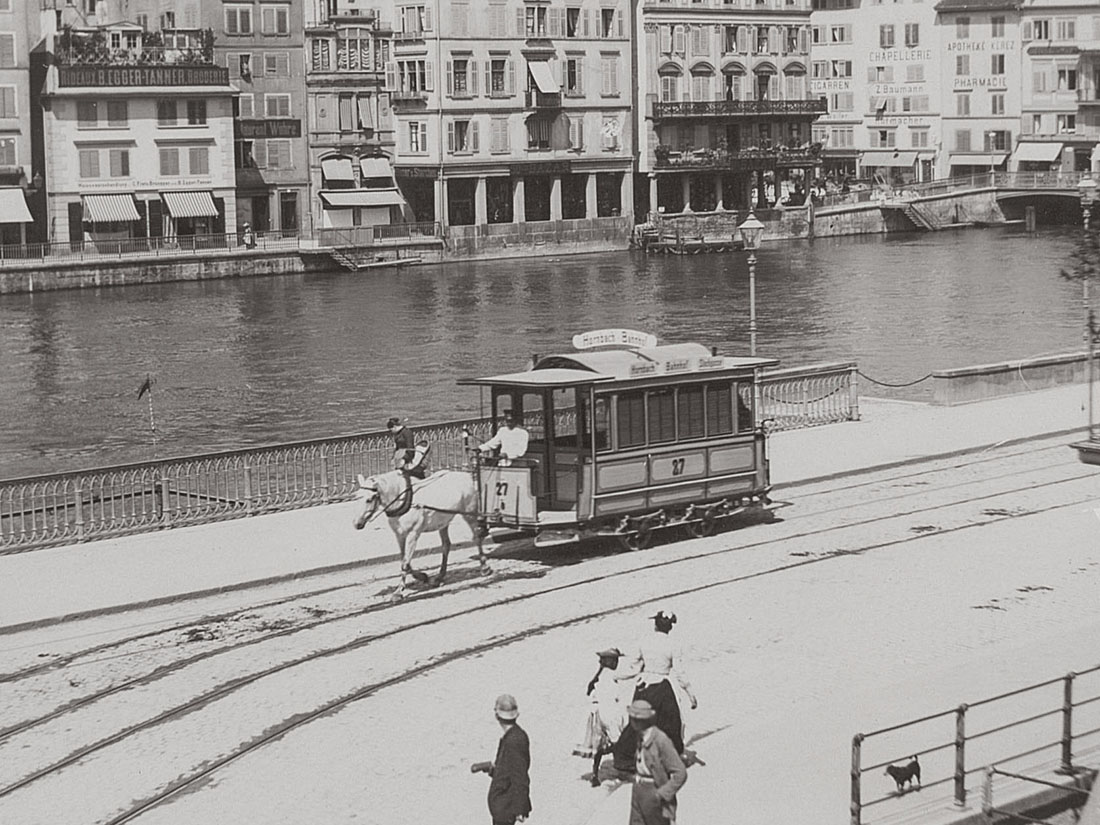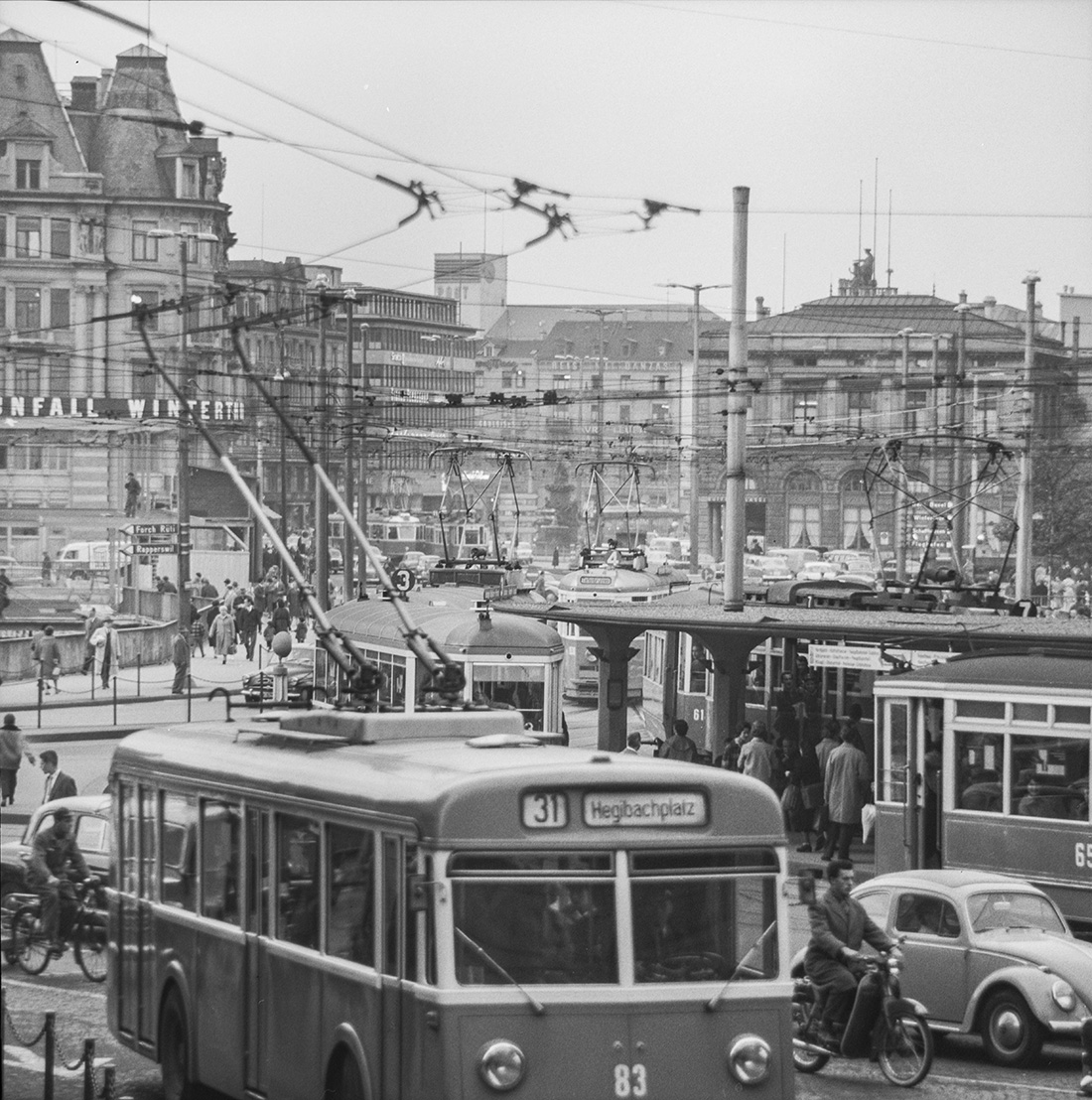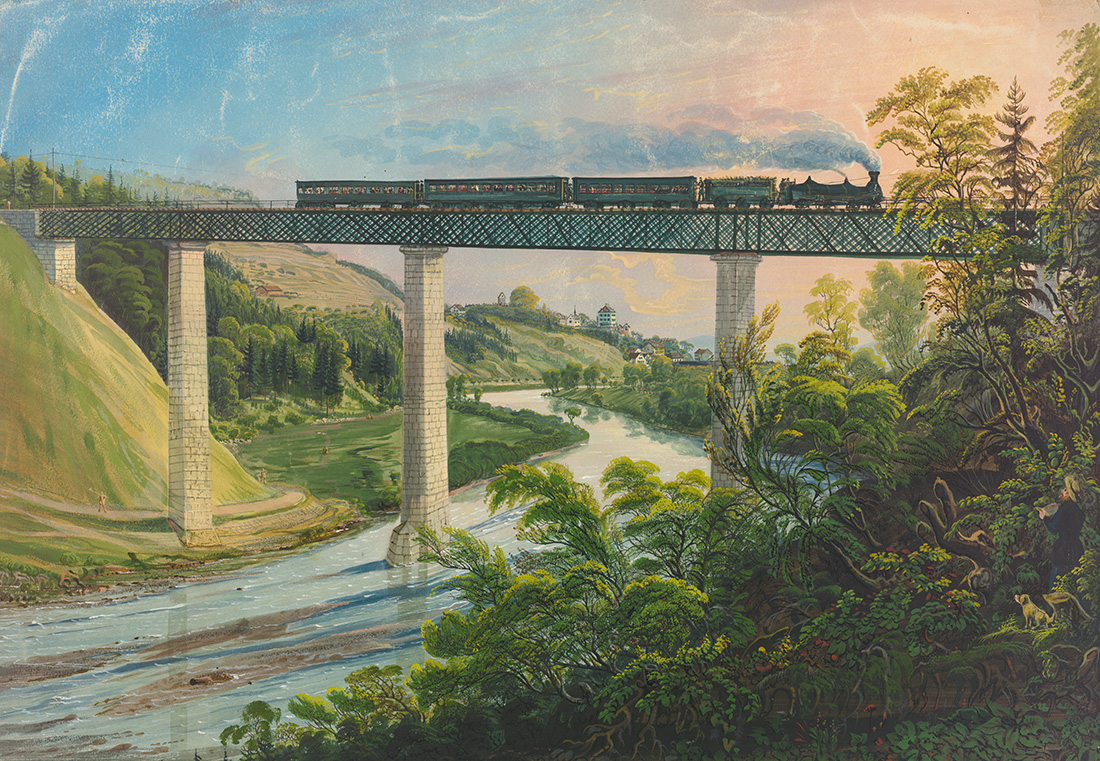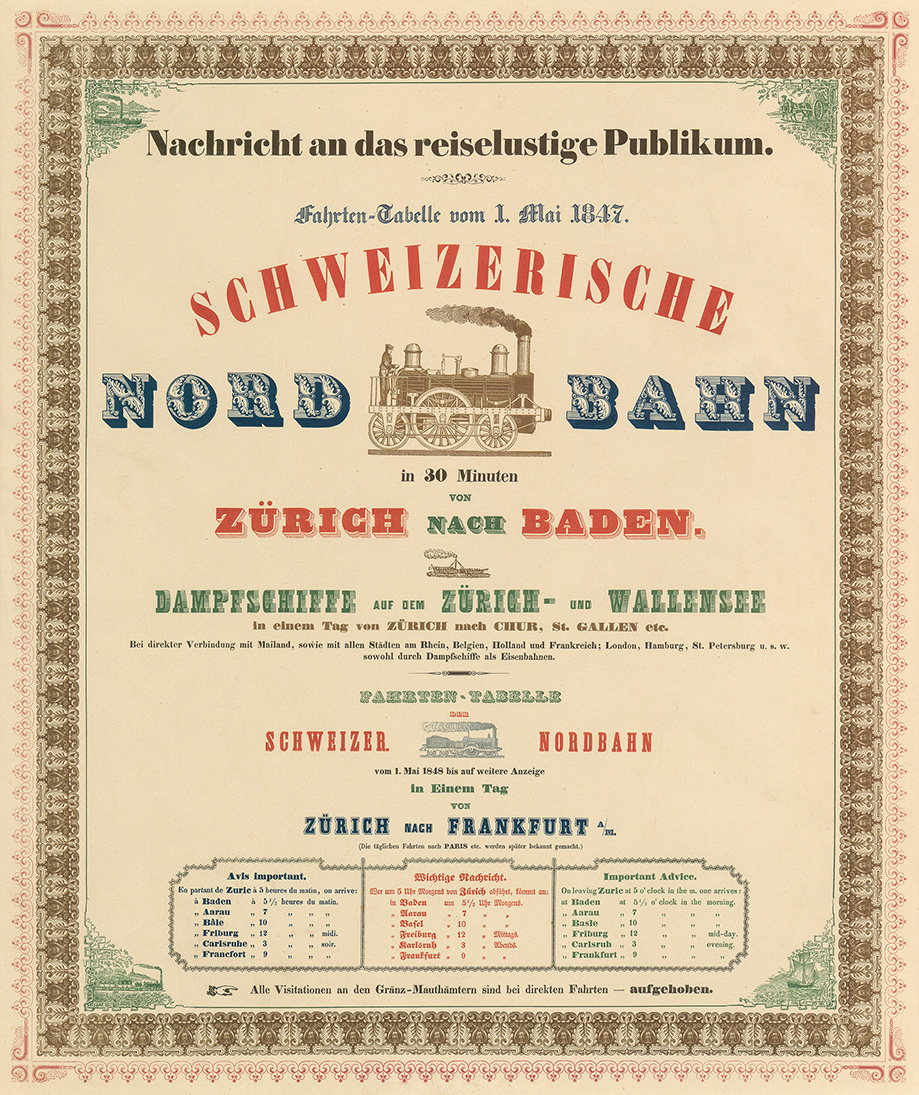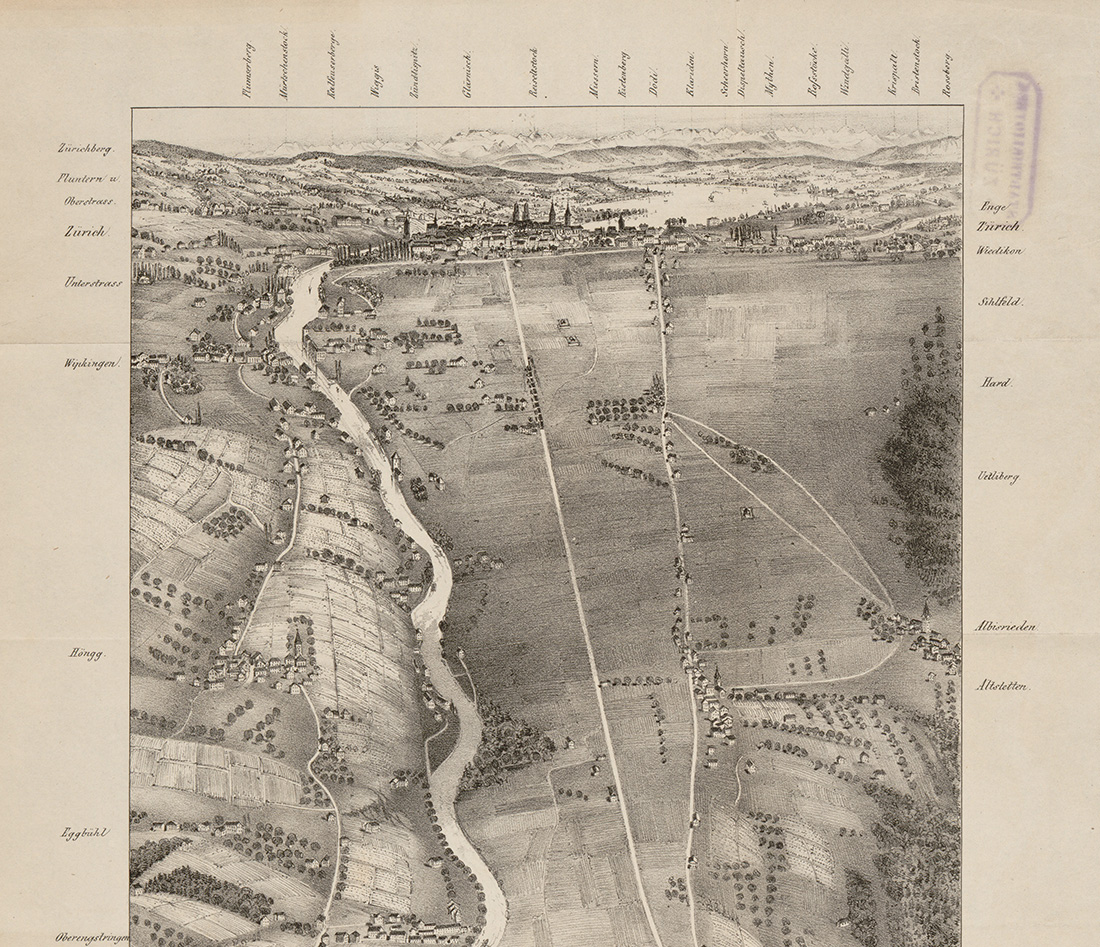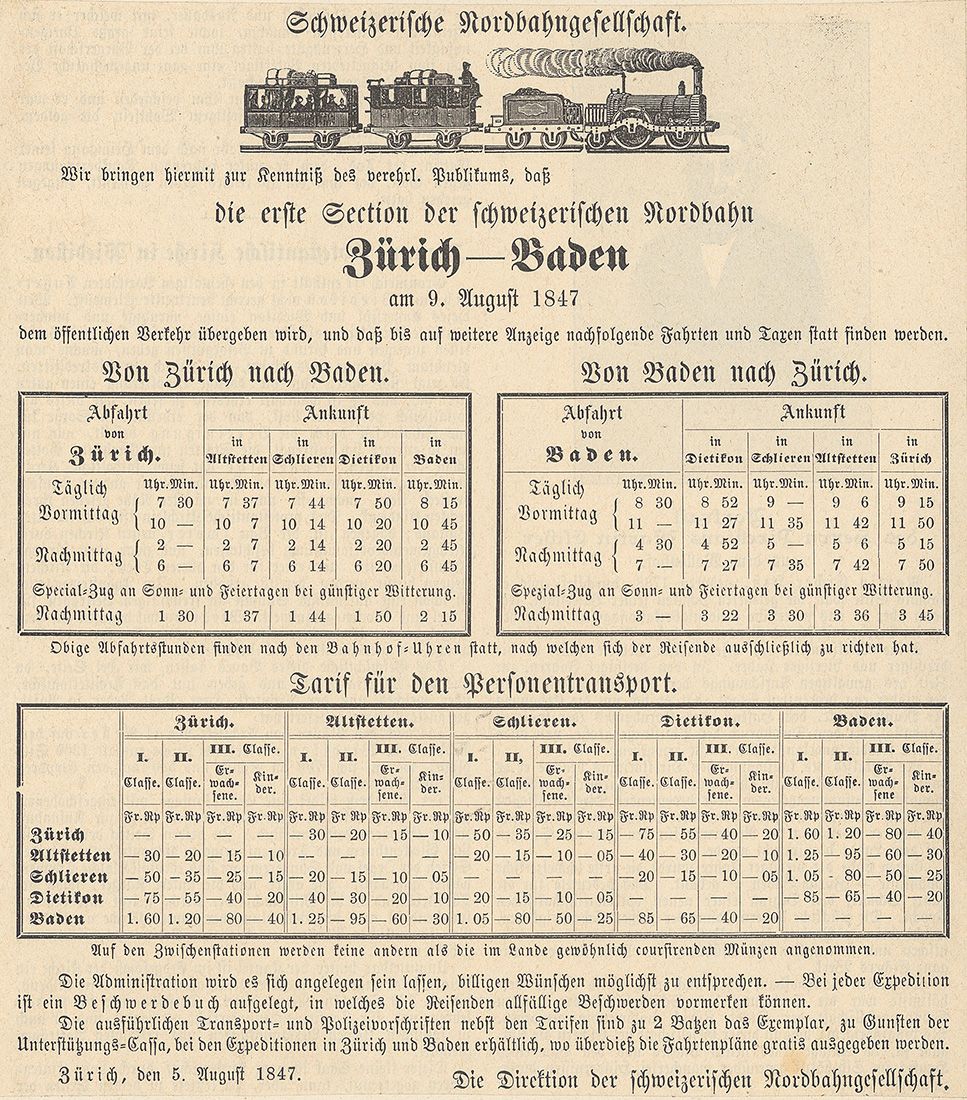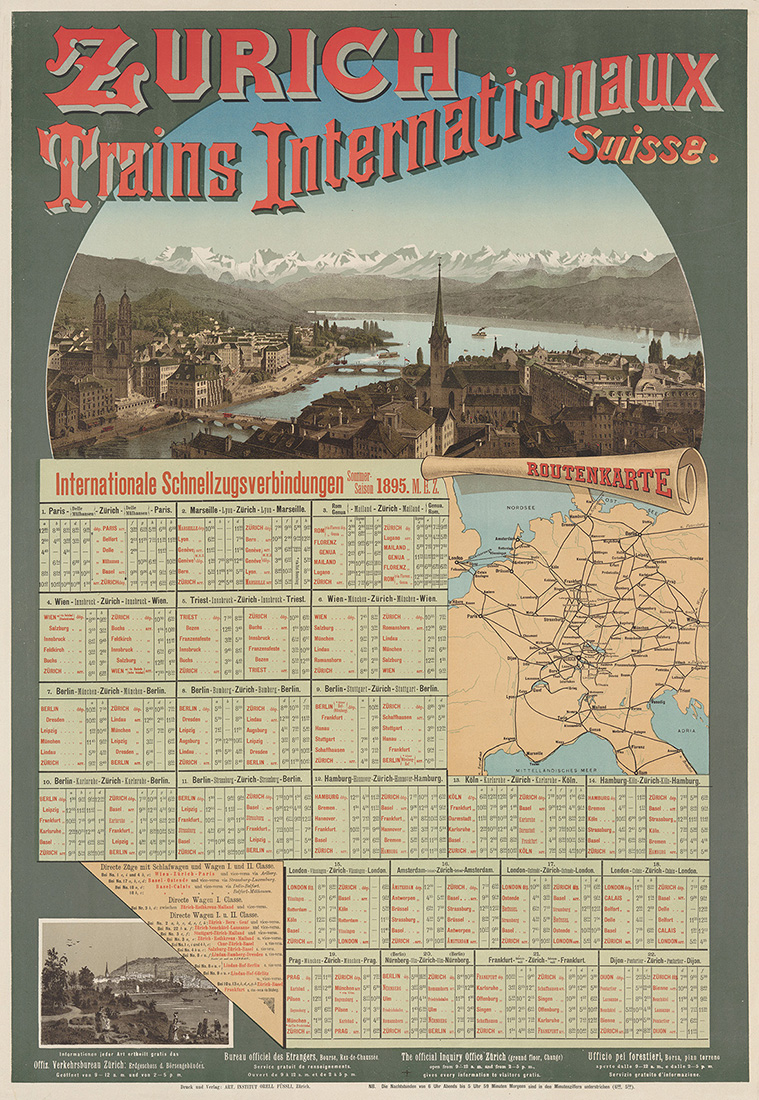
Local public transport in Zurich: key developments across three centuries
The city of Zurich was in a state of upheaval in the mid-19th century. This is epitomised by Bahnhofstrasse, a road constructed in this period which linked the railways to the ferry lines. New modes of transport came into being, while older ones faded into obscurity. From stagecoaches to horse-drawn trams and trolleybuses on through to the S-Bahn (suburban railway), these modes of transport shaped and continue to shape the city and its local public transport systems.
By horse and cart
The era of local public transport in Switzerland got its start around 1735, when the first scheduled stagecoach route between Zurich and Bern came into being. The stagecoach was able to carry four people on the four-day journey. As time went on, a veritable network of postal routes for use by travellers came into existence. Route maps also displayed connections to other up-and-coming forms of transport, such as steamships and the railways.
The postal network was federalised in 1849, putting it under the auspices of the federal government. The Swiss postal network reached its zenith in terms of perfection and completeness around 1850, thanks to high-quality roads, frequent horse changes and good onward connections. Some statistics and studies indicate that only very wealthy people were able to afford this swift mode of transport at the time.
When the new rail lines opened around the turn of the century, the canton of Zurich lost its last major stagecoach lines.
From the steamship ‘Minerva’ to ferries on Lake Zurich
The ‘Minerva’ was the first steamship on Lake Zurich. In 1835, its first voyage saw it depart from Bauschanze island and head towards Rapperswil. ‘The steam started to work up an almighty roar, like a monster,’ as the reporter from the Zürcher Freitagszeitung newspaper put it.
Lake Zurich is not without its dangers: even back in this era, the lake saw accidents time and again. The level of risk rose even further with the advent of new, speedy steamships. A particularly terrible accident occurred in 1872, when two steamers, one with 450 school-age children on board, collided with each other and one sank, resulting in two fatalities.
Public ferries on Lake Zurich took on an increasingly significant role for tourism and were operated by the Zürichsee Dampfbootgesellschaft (ZDG) from 1903 onwards. In line with the flair of the Belle Epoque, the ships became more comfortable and exuded a greater air of luxury: travel was intended to be an experience. Ships from the era – the salon steamers ‘Stadt Rapperswil’ and ‘Stadt Zürich’ – are still in regular public use thanks to the Aktion pro Raddampfer charity. They are part of the fleet operated by the Zürichsee Schifffahrtsgesellschaft (ZSG), which grew out of the ZDG in 1957.
From horse-drawn trams to municipal transport companies
While trams and other urban railways are modes of transport for the masses today, they were the preserve of the upper classes in the 1880s. The private enterprise Zürcher Strassenbahn AG structured the lines of the first horse-drawn Zurich trams to meet the needs of passengers who could afford to travel by tram. Horse-drawn trams were part of day-to-day life for the middle classes in 1890, as Kurt Guggenheim describes in his Zurich-based novel ‘Alles in Allem’ [All in All]. Back then, it was simply unthinkable that servants or workers might use a horse-drawn tram.
Zurich’s residents started to see the trams somewhat differently at the turn of the century, with the city striving to become the ‘city of trams’. Städtische Strassenbahn (StStZ) was founded in 1896. This municipal tram company electrified the tram lines and expanded the tram network so it ran to the outer districts of the city.
The car became a mode of mass transport in the 1950s and 60s, threatening to make trams a thing of the past. In Zurich, the idea was floated of banishing large parts of the public transport network underground. However, the 1970s and 80s saw politicians provide increasing support to public transport, with trams once again becoming a cornerstone of urban mobility.
From steam to white coal
Railway lines were constructed across the entirety of Switzerland from the latter half of the 19th century onwards. The ‘Spanisch-Brötli-Bahn’, linking Baden and Zurich, set off on its maiden trip already in 1847. A quarter of a century later, the Lake Zurich left-bank railway line opened for business. Some people believed that work on the right-hand shore of the lake was progressing too slowly. An 1870 edition of the weekly newsletter for the district of Meilen had the following to report in its ‘Railways’ section: ‘We are currently living in the steam era, with railway-related endeavours to be seen everywhere you look – but only in the district of Meilen is there not a peep; our neighbours on the left-hand shore of the lake are more industrious.’
The railways also had their opponents, who often used the daily newspapers as a vehicle to share their views: they feared that the streets would be deserted and that carriage drivers and innkeepers would be left facing ruin. However, it was impossible to stop the dawn of the new era. After the stagecoaches had petered out, it was also time for the ‘steam-powered horses’ to be consigned to history. The Lake Zurich right-bank line was electrified as early as 1926, with the line on the left-hand shore following not long after. This marked the triumphal march of electricity, also known as ‘white coal’.
Of postbuses, buses and trolleys
Buses began to transport commuters and holidaymakers alike from the 1920s onwards. Postbuses replaced the last stagecoaches, while petrol-fuelled buses ousted numerous overland railways. Their tracks disrupted road traffic; back then, roads were wider for the sake of cars. Today, just two overland railways remain: the ‘Forchbahn’ and the ‘Bremgarten-Dietikon-Bahn’.
In 1939, Zurich became the third city in Switzerland to introduce trolleybuses alongside trams and buses. These electrified buses came in handy during the Second World War, in particular, as they were not dependent on imported fuels.
Today, Zurich is home to eight trolleybus lines – and soon, this number will be increasing, as trolleybuses are part of the plan for creating the 2000-watt society. The aim is to replace all diesel-fuelled buses with new, battery-powered trolleybuses by 2030 to enable the city’s buses to operate with zero CO₂ emissions.
Suburban trains and subways: a vision of Zurich as a major city
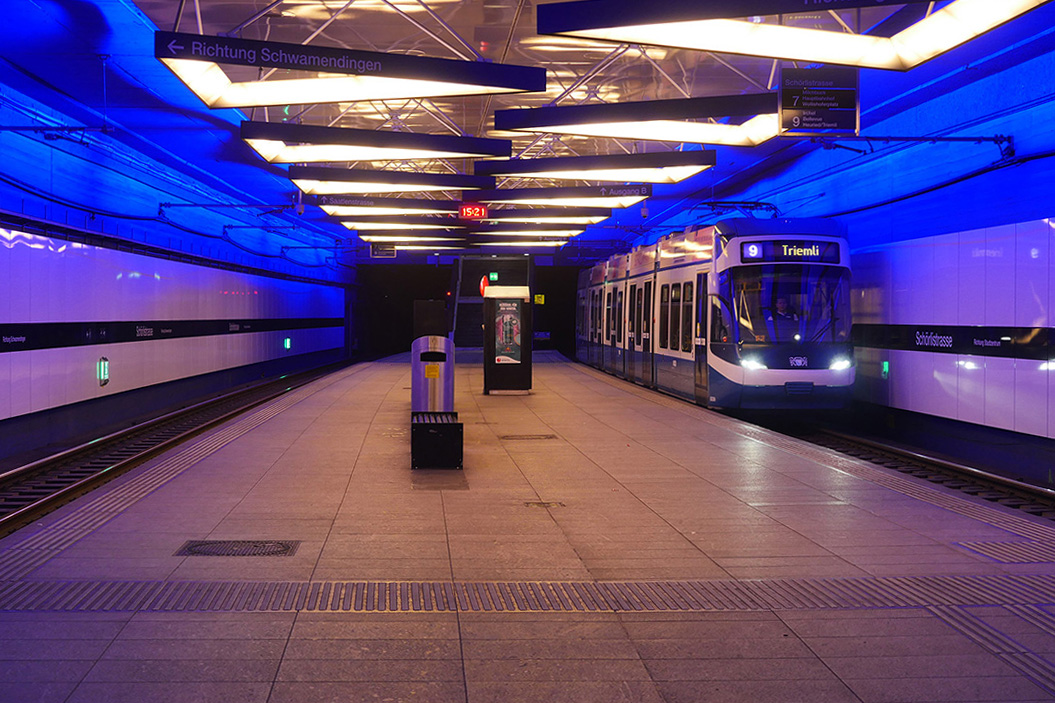
When trams 7 and 9 descend into the Milchbucktunnel, they transform into an underground for three stops. The tunnel is a relic of an era when Zurich’s city council was considering implementing an underground rail system.
50 years ago, some regional trains relied on very old rolling stock, departure and arrival times were not aligned, and travellers had to read multiple timetables. Trams and buses struggled to cope with the traffic on the roads. Nevertheless, Zurich’s voters rejected a concept for an underground and suburban rail system in 1973: evidently an underground was a step too far for the city, in many people’s eyes. All that remains of this concept is the 1.5-km underground section at Milchbuck: roadworks meant that this development was brought forward and constructed even before the vote was held.
Just shy of ten years later, a suburban train system – based on the system used in many German cities – was approved by a large majority. The suburban train system (S-Bahn), which opened in 1990, is a century-defining construction project. It went hand-in-hand with the establishment of the Zürcher Verkehrsverbund (ZVV), which revolutionised public transport in the canton of Zurich: a traveller needs just one ticket to use all its modes of transport, with timetables aligned across the network. Zurich is becoming the ‘global capital of local public transport’.
Recommended reading
Local public transport was not just an issue of interest in the fields of business and politics: it is also reflected in literature.
- ‘Strassenbahnfahren’ [Travelling by tram] in Albin Zollinger’s ‘Gedichten’ [Poems]
- ‘Nur bis Bellevue’ [Just to Bellevue] and ‘Die kürzeste Tramteilstrecke der Welt?’ [The shortest section of a tram line in the world?] in Peter Suter’s collection of brief comments ‘Downtown Seldwyla’ [Downtown Seldwyla]
- ‘Halt auf Verlangen: ein Fahrtenbuch’ [Stop on request: a travel log] by Urs Faes
- ‘Enten’ [Ducks] in Franz Hohler’s volume of short stories ‘Fahrplanmäßiger Aufenthalt’ [Scheduled stop]
- ‘Unterwegs: 25 Gute-Fahrt-Geschichten’ [En route: 25 stories of terrific travels] by Verkehrsbetriebe Glattal (VBG)
- ‘Ist hier noch frei?’ [Is this seat free?] by Verkehrsbetriebe Zürich (VBZ)
- Andrew Bond’s series ‘Ringo-Reise’ [Ringo journey]
Daniel Stettler, subject specialist/liaison librarian on economics
April 2023
Header image: Zurich’s Bahnhofplatz with trams, between 1920 and 1930. Postcard, Kunstverlag Rosenzweig. (ZB Zürich)





